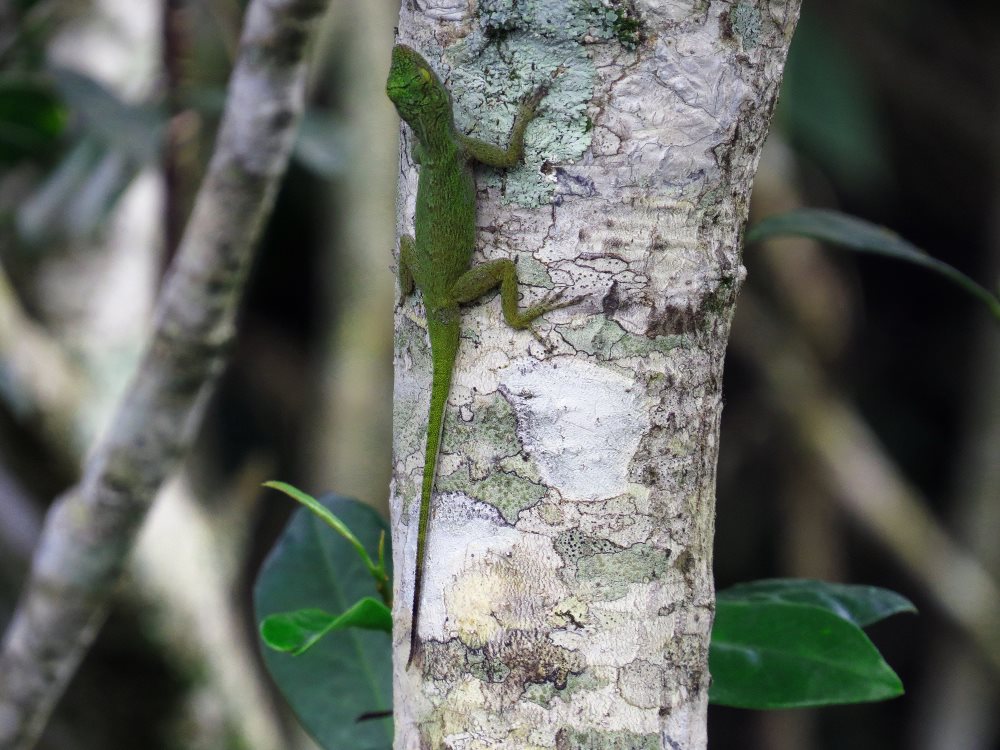
An Hispaniolan Bark Anole on the ascent in A Florida Hammock.
In some cases this variable species might be referred to as “that other Florida anole.”
It seems that no one is 100% certain how this Hispaniolan/Bahaman species reached Florida in 1946, but reach it, it did, perhaps as a whim of Mother Nature, but more likely the result of multiple whims by humans.
The species history of the Bark Anole,
Anolis distichus, might be termed as “active.” At one point in time the Bark Anole was overloaded with 18 subspecies. But people seemed unable to decide if several of these were truly subspecies or were actually full species. Today nothing is definitive (so who is surprised?).
There are probably 2 subspecies of the Bark Anole in Florida. Except for overall color a single description fits both equally well.
There is the always some- shade- of- dark- banded- brown- or- gray
A. d. floridana , and the often some- shade- of -green
A. d. dominicensis.The throat fan of the males may vary individually from pale yellow to light orange. In all, the dark banding is straight and most prominent across the head from eyelid to eyelid and on the tail. Dorsal banding is in the form of narrow, often difficult to see, chevrons.
Both anole subspecies are arboreal, predominantly tree trunk/low limb, species.
Bark Anoles are one of the smaller species attaining an adult size of 4 to 5 inches of which a little more than half is tail length.
In Florida these little anoles are often found in colonies, are wary, and can be difficult to approach.
Ants and other small crawling insects seem to be the favored prey of this species.
The Florida Bark Anole is clad in shades of brown or gray.

Hispaniolan/Bahaman Bark Anoles may assume variable shades of green. The Florida Bark Anole is never green.




